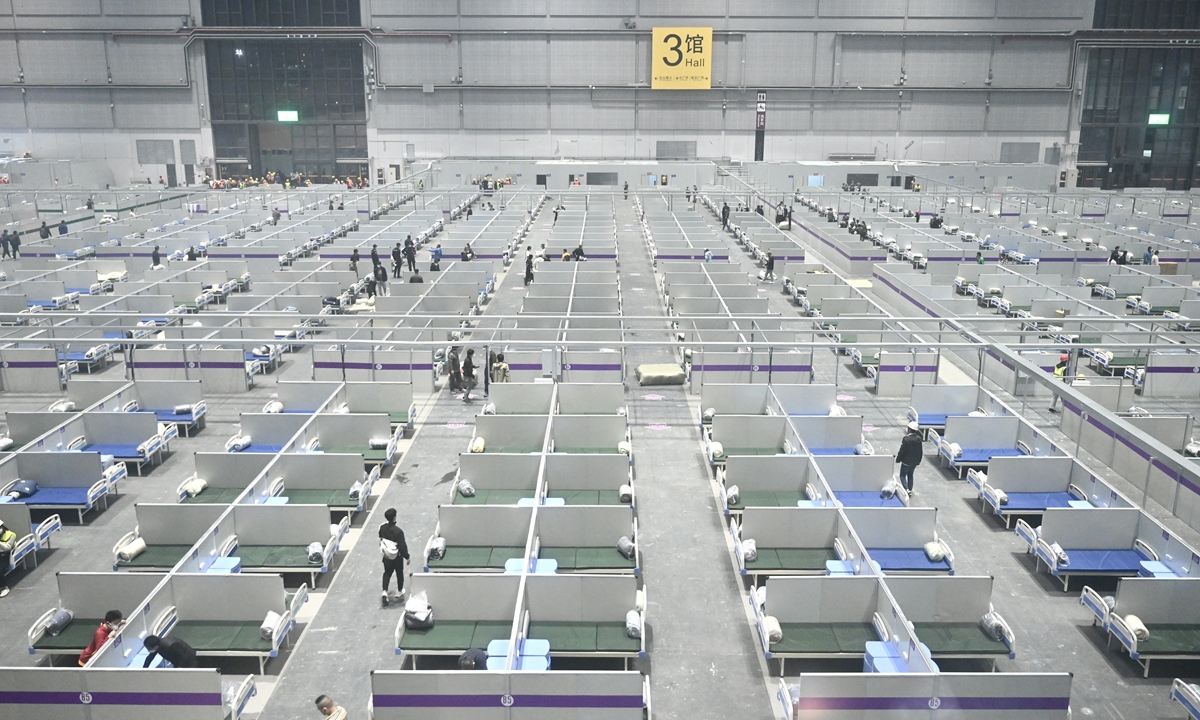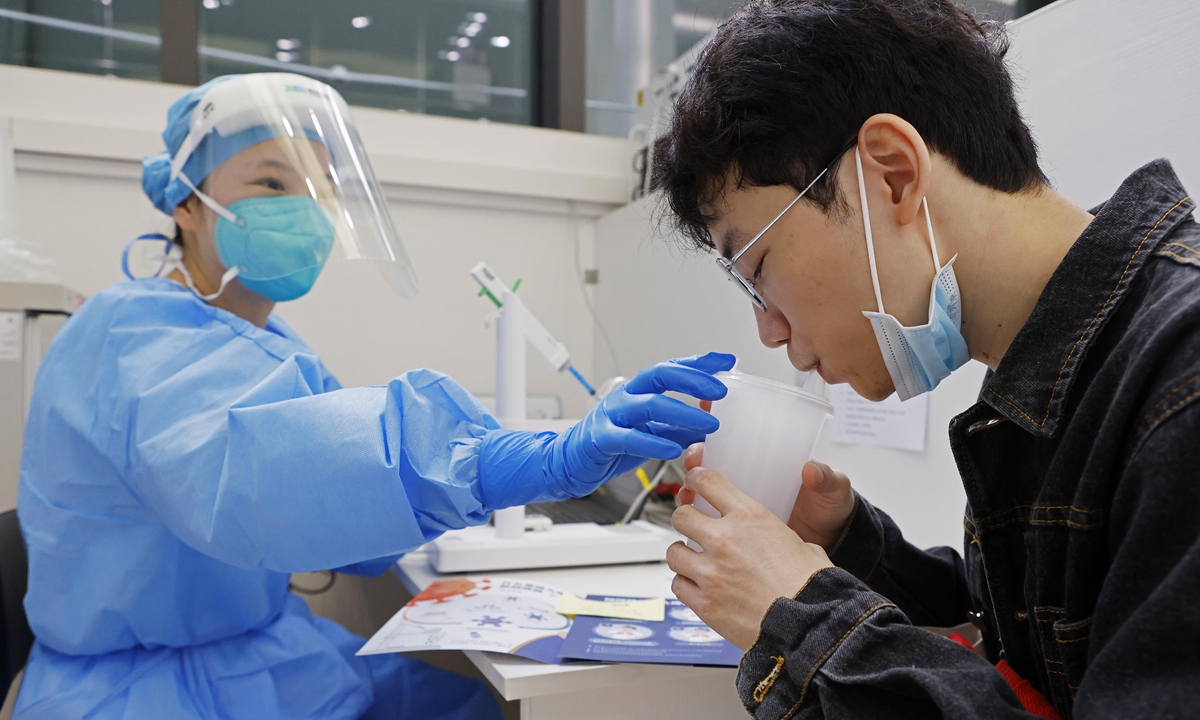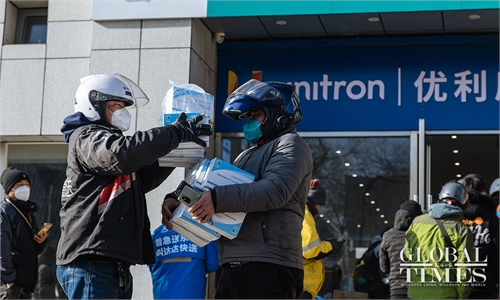China further focuses on severe COVID cases treatment with tiered medical services plan
Latest guideline pools resources for senior citizens, susceptible groups

Shanghai is converting the National Exhibition and Convention Center (NECC) into a makeshift hospital with a planned capacity of 40,000 beds. Upon completion, it is expected to act as the biggest such hospital for those testing positive for COVID-19 in the metropolis.Photo:VCG
China on Friday issued a working plan on health services for COVID-19 key groups to optimize tiered medical services for various groups of people. On the same day, the State Council joint prevention and control mechanism vowed to optimize medical resources and strengthen severe-illness treatment capacity, including upgrading makeshift hospitals.
The working plan requires local authorities to register local residents aged 65 and above as well as their health condition and vaccination history. According to the conditions and the level of the potential severity of the diseases after infection, this age group will be classified into three different groups - high-, medium-, and low-risk.
"The working plan could be effective in allocating more medical resources to key groups including the elderly, who can easily develop severe symptoms, especially during winter," Wang Guangfa, a respiratory disease expert from Peking University First Hospital, told the Global Times on Friday. A tiered medical mechanism will allow those who need it to be detected and treated early and in a timely manner, Wang said.
With the continuous adjustment and optimization of epidemic prevention and control measures across the country, the public has been very concerned about the country's ability to treat severe cases, as well as the situation concerning medical resources.
Good preparations in medical resources can be a key step in the next stage of medical services, Jiao Yahui from the National Health Commission (NHC), said at Friday's press briefing held by the State Council joint prevention and control mechanism against COVID-19. "The total number of critical care beds in China is 138,100, of which 106,500 are in top-tier medical institutions. China currently has nearly 10 critical care beds per 100,000 of its population," said Jiao.

A Shanghai resident receives inhaled COVID-19 vaccine as a booster dose on October 26, 2022. Shanghai became the first city in China to provide this type of vaccine boosters. Photo: VCG
China has released guidelines to strengthen construction of medical resources, including improvements of fever clinics, more medical resources in designated hospitals, upgrading makeshift hospitals according to the size of the city's population and expansion of resources for treatment of critical cases.
Intensive care unit (ICU) beds in top-tier medical institutions are required to reach 4 percent of the total number of beds, and more ICU training will be carried out to ensure larger numbers of medical staff can work in severe cases treatment, said Jiao. Jiao noted that all the renovations and improvements are required to be completed before the end of December.
Facing the epidemic, building medical service capacity is crucial, especially the capacity to treat patients with severe symptoms, Wang noted. "It's an effective way to upgrade makeshift hospitals into qualified hospitals for receiving those high-risk people, who can be monitored early if they develop into critical cases," Wang noted. Most makeshift hospitals were used for quarantine, and the medical facilities there did not meet the requirements for critical patient treatment.
All medical institutions have to receive nucleic acid positive patients, and authorities called on the public not to worry about that. From now on, all medical institutions should be prepared to receive patients based on their symptoms and medical needs, Jiao said.
Chinese experts have noted that the Omicron strain of the virus is not as severe when compared with the original COVID-19 strain and other mutant strains of concern.
About 99 percent of those infected with Omicron can fully recover within seven to 10 days, China's top respiratory disease expert Zhong Nanshan said at a national academic conference of respiratory diseases on Friday. Renowned Chinese epidemiologist Li Lanjuan echoed the view, saying there is no need to panic over Omicron. Asymptomatic infection is not a disease, and a silent carrier is not a patient, Li told the Jiankang Shibao.
Jiao also said that the national health authorities have required all regions to maintain the layout and scale of existing nucleic acid sampling sites in order to meet demand, and how long the original layout lasts completely depends on people's needs.
It can provide convenience for residents, especially those aged or with high risk, it will be helpful for early diagnosis and treatment,and also could reduce cross infections risks in families or workplaces, Wang noted.
Traditional Chinese Medicine combined with Western medicine has demonstrated significant curative effects in treating COVID-19 patients, especially for severe and critical cases, the officials also said on Friday.



